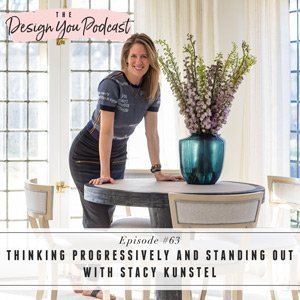
Friends, you’re going to love today’s episode. My friend Stacy Kunstel joins me today and she’s got so much goodness to share. Stacy wears many hats as a multi-faceted storyteller, stylist, writer, editor, co-creator of Dunes and Duchess, and so much more.
Her insight on the publishing industry today and perspective on the importance of having a point of view and ability to tell a story is going to be so useful in thinking about how to market yourself in a broken industry. We cover so much ground, chatting about progressive ways to create content, the advantages of standing out, and how Stacy orchestrates her style.
Join us on the podcast this week to listen in on my amazing conversation with Stacy! She’s truly an expert in the creative industry, and you’re going to love all her tips on how she has created her success.
Stacy will be inside the free Design You Facebook community doing a live Q&A session so you can quiz her on any questions you might have for her. We’ll be announcing when she’ll be on soon, so join us there!





